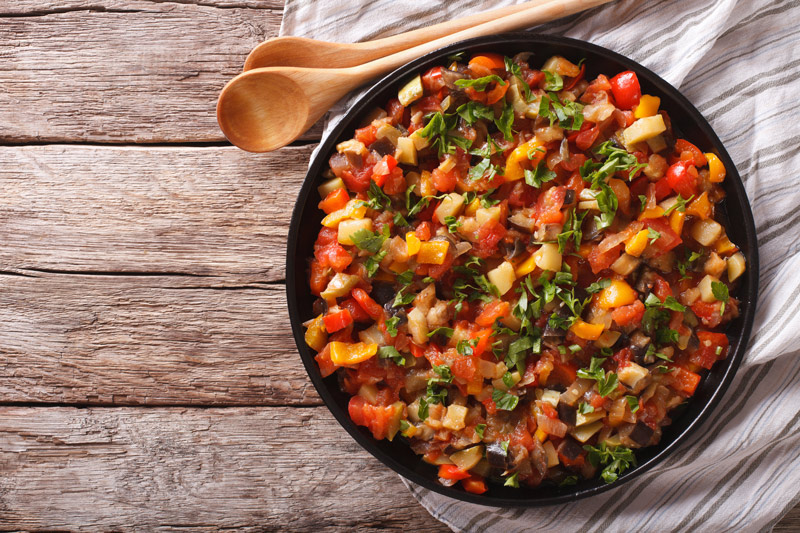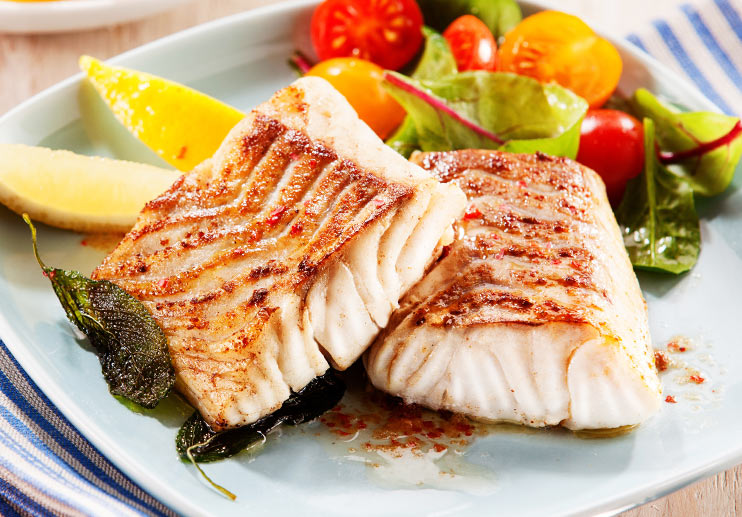Adapted from an article from the University of Barcelona, June 13, 2019
Cooking the vegetables in sofrito (the traditional Spanish sauté of garlic, onion, and tomato) with extra virgin olive oil increases the absorption and release of the bioactive compounds in the vegetables, according to a study conducted by a research team from the Faculty of Pharmacy and Food Sciences at the University of Barcelona (UB), from the Physiopathology of Obesity and Nutrition Networking Biomedical Research Centre (CIBERobn), and the Diabetes and Associated Metabolic Diseases Networking Biomedical Research (CIBERDEM), led by Rosa M. Lamuela-Raventós. These results, published in the scientific journal Molecules, allow for insight into the mechanisms by which gastronomy could play a relevant role in the health-improving effects of the Mediterranean diet.
The Mediterranean diet, which involves a high consumption of phytochemicals from vegetables, fruits, and legumes, has been correlated to health-improving effects in cardiovascular and metabolic health. This correlation has largely been established by findings from the extensive PREDIMED study, a multicenter clinical trial carried out from 2003 to 2011 with more than 7,000 participants.
However, the healthful effects of the Mediterranean diet have been challenging to reproduce in non- Mediterranean populations—possibly, according to the researchers, because of differences in cooking techniques. With this study, researchers have attempted to assess whether the Mediterranean gastronomy imputes its health benefits not only via its food components but also via the way those foods are cooked.
The objective of the study was to assess the effect of the extra virgin olive oil on bioactive compounds in tomato, onion, and garlic—the traditional ingredients in sofrito, one of the key cooking techniques in the Mediterranean diet. According to the researchers, this sauce has forty different phenolic compounds and a high amount of carotenoids, and its consumption is associated with an improvement of the cardiovascular risk parameters and insulin sensitivity.
“The main result of the study is that cooking vegetables with extra virgin olive oil [allows] the bioactive compounds, such as carotenoids and polyphenols, that are present in vegetables we find in sofrito to move to the olive oil, which enables the absorption and bioactivity of these compounds,” says Lamuela -Raventós, director of the Institute for Research on Nutrition and Food Safety (INSA-UB).
The study also identified a new property of olive oil. Previous researchers had noted that the combination of olive oil and onion produces isomers of certain carotenoids. These isomers are more bioavailable and have a higher antioxidant content. This study found that olive oil facilitates this process not only with carotenoids but also with polyphenols, which are transferred from the vegetables to the oil.
These results could explain earlier findings by this research group that the presence of olive oil increases the anti-inflammatory effects of sofrito. “We saw that this increase can occur due to the migration of bioactive compounds (carotenoids and polyphenols) from the tomato, onion, and garlic to the oil during the cooking process, which [improves] the absorption of these compounds,” concludes José Fernando Rinaldi de Alvarenga, INSA-UB member and lead author of the paper.
Reference: de Alvarenga JF et al. Using extra virgin olive oil to cook vegetables enhances polyphenol and carotenoid extractability: a study applying the sofrito technique. Molecules. 2019;24(8): DOI: 10.3390/molecules24081555.



